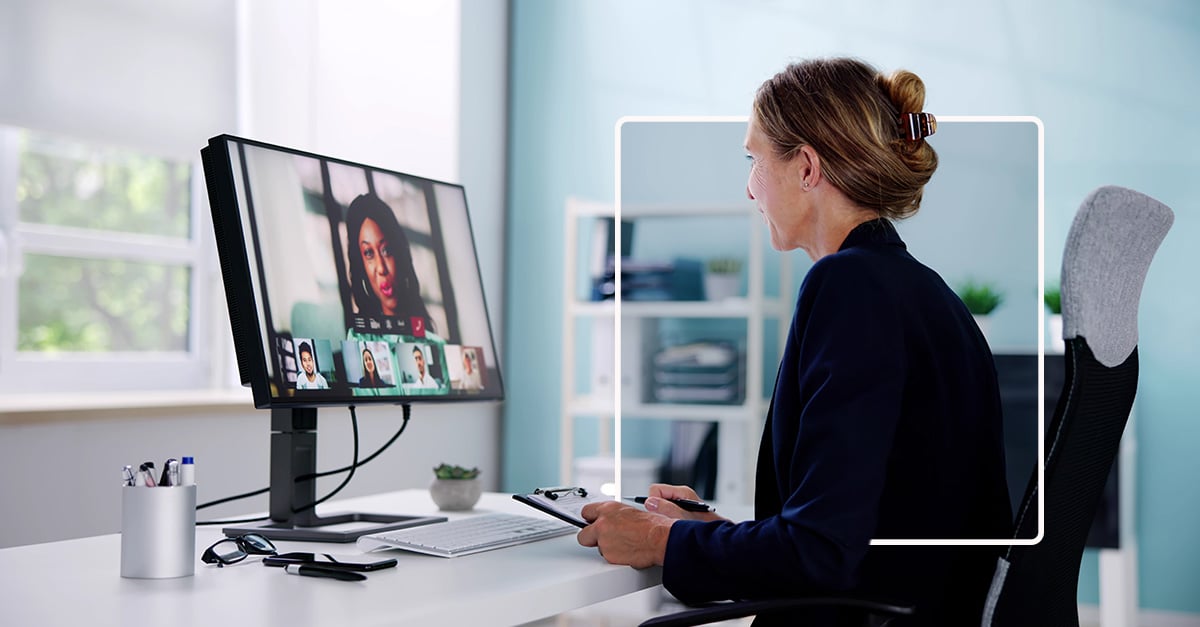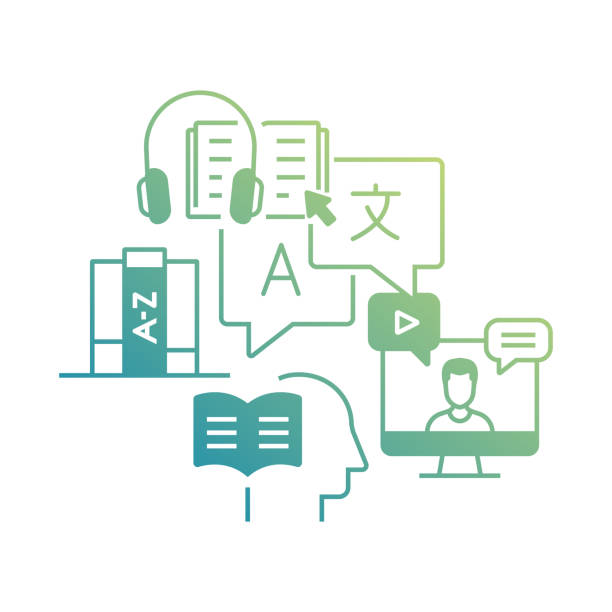Fall in Love with Blended Learning, Like I Did in 1975
I am a product of Public Television. As a child, my hours of daytime television were limited to the line-up on local Channel 13. Mr. Rogers’...
5 min read
 Jennifer Lindsay-Finan
:
Apr 15, 2024 5:19:28 PM
Jennifer Lindsay-Finan
:
Apr 15, 2024 5:19:28 PM

Hybrid learning has emerged as a profound challenge to the learning and development industry, challenging traditional blended learning models by integrating virtual and in-person training experiences. This approach not only accommodates diverse learning needs but also serves as a catalyst for change management within global organizations. By leveraging technology to deliver content and foster collaboration, hybrid learning promotes adaptability and innovation. Its ability to transcend geographical boundaries ensures global consistency in delivery, providing learners with equitable access to high-quality instruction regardless of their location.
As hybrid learning continues to evolve, it provides an opportunity to enhance educational outcomes for disparate learning audiences and fosters a more interconnected and inclusive learning environment for change management and global consistency.

In the past, traditional blended learning did not really consider where people were located—remote, hybrid, in the office, or in different global locations. The traditional blended learning model only matched the learning objective with the optimal delivery format. If the learning objective was very knowledge based and very lecture oriented, then it could be self-paced because it wasn't as participatory. The model was about getting the content out in the best way possible and did not consider where the learners were located.
In theory, since the new hybrid learning approach requires that the designer take into consideration where the learners are, it needs to be much more adaptive to the specific needs of each learner’s environment. It includes a greater focus on environments, which include remote, hybrid, in office, and even different global locations where culture, language and regionalization must be considered in training design and delivery.
In reality, our latest research study shows that most instructional deliveries for hybrid audiences appeared to be designed ONLY for either remote or in-person delivery, despite both types of audiences being present in the same session. In these instances, learners often expressed concerns that the program was really meant for only one type of audience and that some portion of the participant audience was “missing out.” However, if hybrid learning is delivered effectively, learner outcomes are as good as or better than any other well-designed and implemented training delivery.
So, what impact do hybrid training, learning environment, and culture have on learner engagement? A blog article written in 2023 by InSync’s Jennifer Lindsay-Finan addresses this challenge and provides some timely solutions. Below is an excerpt of the article which deserves revisiting in light of our latest research study findings.
When we talk about a hybrid model, we are really talking about the learner’s environment—where they are and how they’re interacting with the learning experience. Blended refers to the delivery technology and the content. It includes live classes (in person, virtual instructor led, or a combination) as well as other resources and activities that learners typically work through in a self-paced format.
In this modern workplace where our people are working in different environments every day (at home, in the office, or somewhere else) and are working at different times of day with a need to learn through various mediums, we need our learning programs to be both hybrid and blended.
When it comes to learner engagement, the key with hybrid training programs is to ensure that no learner gets left behind. Further, it is to make certain that every learner can fully participate and contribute to the learning experience, no matter where they are or what kind of device they’re joining on. When it comes to hybrid blended programs, it’s important to consider both the live classes and the rest of the blend.
The biggest impact that live hybrid classes have on learner engagement occurs in the environmental dimension of engagement, since it's the environment itself that's different. Some learners will be in the same room as each other, thus experiencing the same learning environment, while others are joining from various remote locations with completely different set ups and surroundings.
Imagine the learners that are in the same physical space: their learning environment might consist of watching a presentation on a projector screen and listening through speakers. Perhaps they have a microphone on the middle of the table and maybe even a webcam trained on them. Perhaps they have teas and coffees and cakes on hand with pens and notebooks and sticky notes scattered around the room. Their environment may be shared with other colleagues working around them, or maybe they’re located in a training room so that they don’t need to think about how much noise they’re making.
Even though the experience is instructor-led, the environment is not the same as in face-to-face training. These learners are aware that they are being heard and maybe also seen by others who are not in the room with them. When it comes to engaging in the learning, they must act differently. They can't just speak "normally" because the virtual participants won’t hear them well enough. They can’t just stand up and walk over to the coffee pot without the virtual participants wondering where they’re going. Nor is it the same as individual virtual training, as they can’t annotate on the whiteboard or ask questions in chat if there’s only one keyboard which is sitting by the projector out of reach of everyone. Overall, the different learning environment makes the way they engage in the experience different. If they can’t easily contribute to the learning experience, we know that that struggle is going to impact their intellectual and emotional engagement too.
Now imagine the virtual learners. They’re all joining from various locations—home, another office, a warehouse, a car . . . anywhere, really. They’re all joining on different devices—PC, Mac, tablet, or phone. All of their learning environments could be very different, but none of them are quite the same as they would be in regular virtual training. They may constantly be thinking about what they’re missing out on because they’re not in the same room as their colleagues.
Combine all of this with the possibility that a learner may join from different locations and devices on different days during the program—and engaging online learners becomes a constant challenge.
We know that a detrimental impact on environmental engagement will impact the other engagement dimensions too. That fact means we need to get it right.
Let's start with technology. It could be different from what the learner is used to. If a learner is in a room together with other learners, sharing audio, can they still access the chat to ask questions, and can they still use private chat to ask for help privately? If this situation means learners need to join from a phone as well, what do they need to know about navigating the virtual learning platform on a mobile device?
If environmental engagement is not managed properly, it will have a negative effect on emotional engagement—often in the form of FOMO (fear of missing out). Not just FOMO about the cake—learners will know if there are side conversations taking place in the room that they’re not privy to. Their engagement will suffer if they feel that the facilitator can’t see them as well as they see the learners right in front of them. Intellectual engagement will also suffer if learners can’t contribute like the others can; if they’re not hearing or seeing everything that’s happening; or if they can’t collaborate with certain people.
It’s not all about the live classroom events though. Remember—this is about blended learning, meaning we need to ensure ALL the elements of the learning program are designed in a way to ensure that no learner gets left behind. Here are two tips to get you started working toward that goal.
First, we can provide a space to communicate in between the live events, such as a forum. Having a community learning forum (and consistently directing people to it) encourages learners to share their work there with everyone. If we don’t have a space like that, learners are left with talking about it in passing at the office, where only some people will benefit.
We also want to design for learners to be able to contact us when they need help. This is especially important when navigating the LMS for the first time. Those in a shared office space have the benefit of being able to speak up and ask each other where to find the materials, but someone working from home that day may give up if they can’t find it quickly or can’t easily contact the instructional team for help. Being available and expecting questions in advance will help learners realize that even in this new hybrid environment, they have the support to thrive.
If you would like to delve further into this topic, join us for a webinar and panel discussion on May 2, 2023 titled "The Role of Strategic L&D in Redefining Workforce Development.” In this interactive session, moderated by Jennifer Hofmann, Founder and Chief Strategist at InSync Training, our panel of L&D experts will explore how we can foster sustainable change in our organizations and sectors through strategic learning and development methods.

I am a product of Public Television. As a child, my hours of daytime television were limited to the line-up on local Channel 13. Mr. Rogers’...

Thanks Conrad and Bob! Read to the end for some personal advice on how to apply this approach from Bob Mosher
Today's learning environment is wide open. We can choose from a multitude of technologies, modalities and techniques. But what's the best way to...